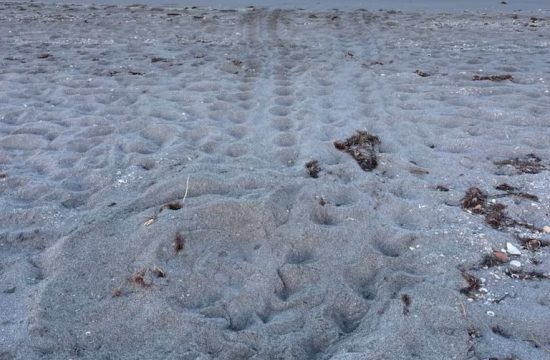How Many Hurricanes Can We Expect This Year?
The 2022 Atlantic hurricane season officially began on June 1. s! : Almanac.com
What Is Hurricane Season?
The official Atlantic hurricane season lasts from June 1 to November 30 (though hurricanes can happen at any time of the year). The forecasts here cover the Atlantic Basin—the area encompassing the Atlantic Ocean, Caribbean Sea, and Gulf of Mexico.
Each year, a series of hurricane forecasts are issued from April through August by the noted hurricane experts at the Department of Atmospheric Science at Colorado State University (CSU). Additional forecasts are put out by the National Oceanic and Atmospheric Administration (NOAA).
When it comes to hurricanes, there are many indicators related to atmospheric and oceanic conditions that indicate what to expect. Keep in mind: Whatever the forecast, remember that it only takes one hurricane to make landfall and coastal residents should prepare for every hurricane season.
2022 Atlantic Hurricane Season Forecast
How Many Hurricanes Are Expected This Year?
An above-normal number of storms is expected for the 2022 season.
- Of the hurricanes that are expected to occur, 5 are expected to turn into major hurricanes. (“Major hurricanes” are storms reaching at least Category 3 strength in the Saffir-Simpson Hurricane Scale.)
:
- CSU’s latest extended range forecast (published June 2, 2022) predicts a season with a “well above-average” amount of storm activity. Currently, they are predicting a total of 20 named storms for the year, of which 10 will become hurricanes. Of the hurricanes that are expected to occur, 5 are expected to turn into major hurricanes. (“Major hurricanes” are storms reaching at least Category 3 strength in the Saffir-Simpson Hurricane Scale.)
- CSU predicts an “above-average” chance (76%) of at least one major hurricane making landfall across the entire U.S. coastline, a 51% chance of a major hurricane making landfall along the East Coast (including the Florida peninsula), and a 50% chance along the Gulf Coast. Additionally, they predict that there is a 65% of a major hurricane tracking into the Caribbean.
View the raw numbers from CSU’s forecast and the final observed activity in the table below.
| Forecast Parameters | Initial Forecast (April 2022) |
Updated Forecast (June 2022) |
Final Forecast (August 2022) |
Observed Storm Activity (through November 30) |
Average Count (1991-2020) |
|---|---|---|---|---|---|
| Named Storms | 19 | 20 | – | – | 14.4 |
| Named Storm Days | 90 | 95 | – | – | 69.4 |
| Hurricanes | 9 | 10 | – | – | 7.2 |
| Hurricane Days | 35 | 40 | – | – | 27.0 |
| Major Hurricanes | 4 | 5 | – | – | 3.2 |
| Major Hurricane Days | 9 | 11 | – | – | 7.4 |
| Accumulated Cyclone Energy | 160 | 180 | – | – | 123 |
| Net Tropical Cyclone Activity | 170% | 195% | – | – | 135% |
| Activity Level | Above average | Above average | – | – | – |
2022 Hurricane Names
See the list of hurricane names for both the Atlantic Basin and Eastern North-Pacific. Is your name listed? The World Meteorological Organization’s Hurricane Committee chooses these names (not The Old Farmer’s Almanac!).
The list actually repeats every six years unless a storm is so severe that the World Meteorological Organization votes to retire that name from future lists. See more about how hurricanes get their names.
More than 60 names have been retired since 1950 because they resulted in significant property damage or deaths. A name can be retired at the request of a country affected by the storm. See the most recent list of retired hurricane names.

Facts About Hurricanes
Q. What Is a Hurricane?
A. A hurricane is a tropical storm with winds that have reached a constant speed of at least 74 mph in the North Atlantic Ocean, Caribbean Sea, or Gulf of Mexico. A hurricane’s winds blow in a large spiral around a relatively calm center of extremely low pressure known as the eye of the storm. Around the rim of the eye, winds may gust to more than 200 mph. The eye of a storm is usually 20 to 30 miles wide and may extend over 400 miles. The entire storm can be up to 340 miles in diameter, dominating the ocean surface and lower atmosphere for thousands of square miles.
Q. How Does a Hurricane Form?
A. Hurricanes only form over warm waters in the tropics (usually above 27°C, or about 81°F). Think of a hurricane as a giant engine. Its fuel is warm, moist air—which rises from the oceans causing an area of lower pressure below. Then the air from surrounding areas with higher air pressure pushes into the low-pressure area. Then that “new” air becomes warm and moist and rises, too. As the warm air continues to rise, the surrounding air swirls in to take its place. As the warmed, moist air rises and cools off, the water in the air forms clouds. The whole system of clouds and wind spins and grows, fed by the ocean’s heat and water evaporating from the surface. Around their core, winds grow with great velocity, generating violent seas. Moving ashore, they sweep the ocean inward while spawning tornadoes and producing torrential rain and floods.
Storms that form north of the equator spin counterclockwise. Storms south of the equator spin clockwise. This difference is because of Earth’s rotation on its axis.
Q. How Do We Know a Hurricane Is Coming?
A. Now, thanks to satellite technology, no hurricane goes unnoticed. See our article on “Predicting Hurricanes: The Eyes Have It” to learn more.
It also usually takes several days to a week for a tropical storm to grow into a hurricane and there is often plenty of time to take precautionary measures unlike some extreme weather events (such as a tornado).
But if conditions are just right, a powerful major hurricane can develop in just hours. This has been called “rapid intensification” by the National Hurricane Center. When conditions are just perfect, a storm can increase its wind speed 35 mph in 24 hours or less—about two categories on the Saffir-Simpson scale, which grades hurricane strength from 1 to 5. Rapid intensification, however, is rare, with just one or two Atlantic storms per year undergoing such an acceleration.
Q. What Is the Cause of Hurricane Damage?
A. Hurricanes actually weaken when they hit land because they are no longer being “fed” by the energy from the warm ocean waters. When hurricanes move over large landmasses, they can die out quickly because they lose the power of heat and condensation. However, they often move far inland, dumping many inches of rain and causing lots of wind damage before they die out completely. So it’s not just high winds that cause danger; it’s the torrential rains and storm surges. A hurricane can last for 2 weeks or more over open water and can follow a path across the entire length of the eastern seaboard, coastal areas, and barrier islands.
Q. Which Areas Are Most Susceptible to Hurricanes?
A. All Atlantic and Gulf coastal areas are subject to hurricanes or tropical storms. Although rarely struck by hurricanes, parts of the Southwest and Pacific Coast suffer heavy rains and floods each year from the remnants of hurricanes spawned off Mexico. Islands such as Hawaii, Guam, American Samoa, and Puerto Rico also are subject to hurricanes.

Q. Is a Hurricane the Same as a Cyclone? How Is Tropical Weather Classified?
A. A hurricane is actually one of three kinds of tropical storms, or cyclones, that circulate over tropical waters. The circulation is counterclockwise in the Northern Hemisphere. Tropical cyclones are classified as follows:
- Tropical depression: An organized system of clouds and thunderstorms with a defined circulation and maximum sustained winds of 38 mph (33 knots) or less.
- Tropical storm: An organized system of strong thunderstorms with a defined circulation and maximum sustained winds of 39 to 73 mph (34 to 63 knots).
- Hurricane: An intense tropical weather system with a well-defined circulation and maximum sustained winds of 74 mph (64 knots) or higher. In the western Pacific, hurricanes are called typhoons. Similar storms in the Indian Ocean are called cyclones. Hurricanes are further classified by rank according to how strong their winds are.
Q. How Are Hurricanes Classified and What Are Hurricane Categories?
A. The Saffir-Simpson Hurricane Scale is a 1-5 rating based on the hurricane’s present intensity. This is used to give an estimate of the potential property damage and flooding expected along the coast from a hurricane landfall. Wind speed is the determining factor in the scale, as storm surge values are highly dependent on the slope of the continental shelf in the landfall region. Wind speeds are measured using a 1-minute average. See more about the Saffir-Simpson Hurricane Scale.
| Saffir-Simpson | Wind (mph) | Hurricane Examples |
|---|---|---|
| Category One | 74 – 95 | Allison (1995), Danny (1997) |
| Category Two | 96 – 110 | Bonnie (1998), George (1998), Gustav (2002) |
| Category Three | 111 – 130 | Roxane (1995), Fran (1996), Rita (2005) |
| Category Four | 131 – 155 | Opal (1995), Iniki (1992), Charley (2004), Katrina (2005) |
| Category Five | 156 + | Andrew (1992), Matthew (2016), Irma (2017), Maria (2017) |
Q. What Do Hurricane Warnings Mean?
A. A hurricane watch means that hurricane-force winds are possible within 48 hours. A hurricane warning means that hurricane-force winds are likely within 36 hours.













